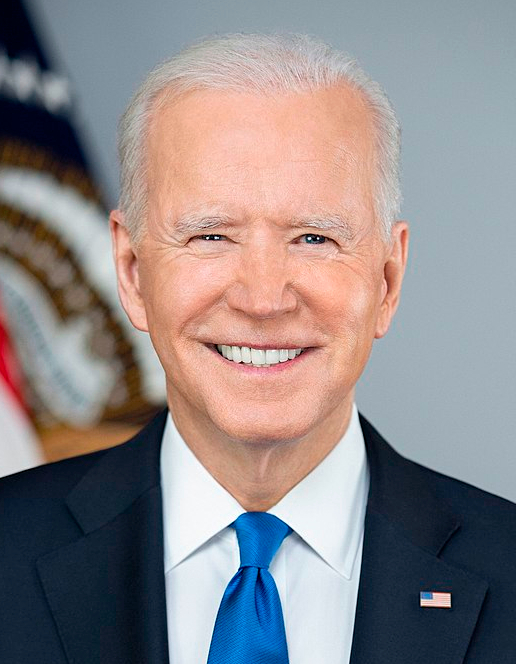
漢德百科全書 | 汉德百科全书
 Claudia Sheinbaum
Claudia Sheinbaum

 Party and government
Party and government

 Party and government
Party and government
 Group of the twenty most important industrial and emerging countries
Group of the twenty most important industrial and emerging countries
 President or Chairman
President or Chairman
 President or Chairman
President or Chairman
 Mexiko
Mexiko

克劳迪娅·辛鲍姆·帕尔多(西班牙语:Claudia Sheinbaum Pardo [ˈklawðja ˈʃejmbawm ˈpaɾðo],1962年6月24日—)是一位墨西哥女科学家、政治人物,现任墨西哥总统。2000年至2006年期间,安德烈斯·曼努埃尔·洛佩斯·奥夫拉多尔担任墨西哥城市长,此时她担任墨西哥城环境局局长。2007年,她加入政府间气候变化专门委员会。该委员会于同年获得诺贝尔和平奖。2015年至2017年期间,出任特拉尔潘市市长。2018年,她被列入《巾帼百名》。2018年7月1日,当选墨西哥城市长,为墨西哥城第二位女性市长。[3][4][5]
辛鲍姆在2024年墨西哥大选中成功当选总统,是该国史上第一位女性国家元首,亦是首位犹太裔国家元首[6][7]。
Claudia Sheinbaum Pardo (Aussprache ['ʃɛɪnbaʊm]; * 24. Juni 1962 in Mexiko-Stadt) ist eine mexikanische Physikerin und Politikerin. Sie ist seit dem 1. Oktober 2024 Präsidentin Mexikos, zu der sie bei den Präsidentschaftswahlen im Juni 2024 als erste Frau gewählt wurde. Davor war sie Regierungschefin von Mexiko-Stadt. Sie wurde im Juli 2018 als Teil der Koalition Juntos Haremos Historia und Mitglied der Partei Movimiento Regeneración Nacional (Morena) gewählt und blieb bis Juni 2023 im Amt. Sie ist die zweite Frau, die in dieses Amt in Mexiko-Stadt gewählt wurde.
Als Wissenschaftlerin ist sie Autorin von über 100 Fachartikeln und zwei Büchern zu den Themen Energie, Umwelt und nachhaltige Entwicklung und wirkte als Autorin bzw. Leitautorin an Sachstandsberichten des Weltklimarates (IPCC) mit.

 Party and government
Party and government
 *President or Chairman
*President or Chairman

 Party and government
Party and government
 Group of the twenty most important industrial and emerging countries
Group of the twenty most important industrial and emerging countries
 Recep Tayyip Erdoğan
Recep Tayyip Erdoğan
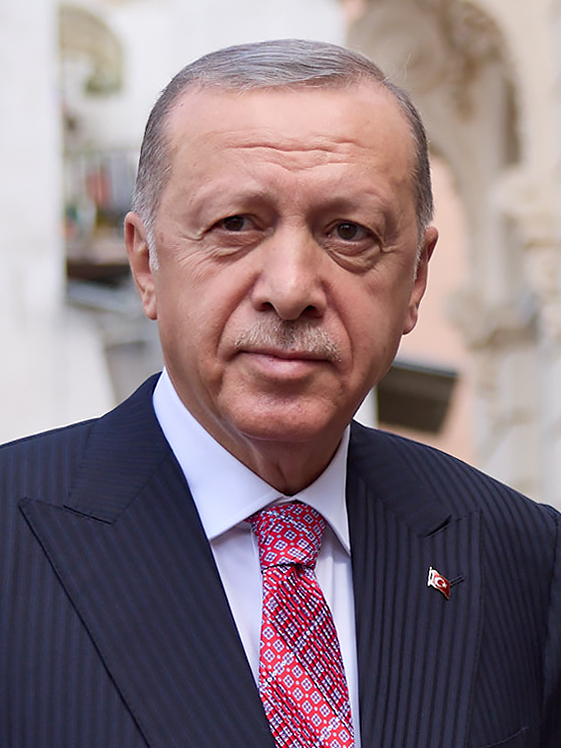
 *Track and field athletics
*Track and field athletics
 4x100 m Woman
4x100 m Woman
 *Track and field athletics
*Track and field athletics
 4x400 m Woman
4x400 m Woman
 Germany
Germany

 European Union
European Union
 History of the European Union
History of the European Union

 European Union
European Union
 *Founding states
*Founding states

 Geography
Geography
 Leichtathletik-Weltmeisterschaften
Leichtathletik-Weltmeisterschaften
 2001 Edmonton
2001 Edmonton
 Leichtathletik-Weltmeisterschaften
Leichtathletik-Weltmeisterschaften
 1997 Athens
1997 Athens

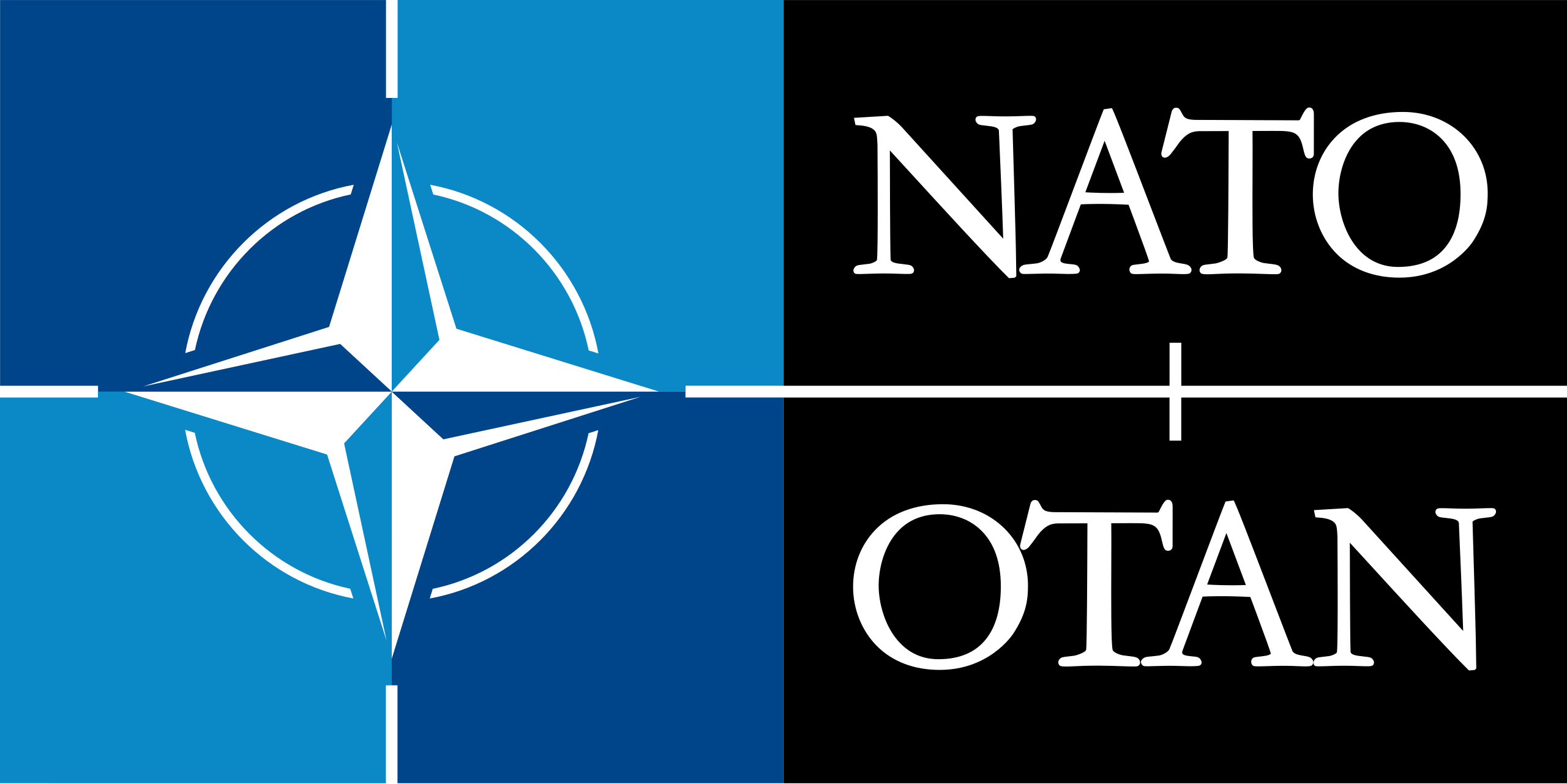 Mitglieder der NATO
Mitglieder der NATO

 Party and government
Party and government
 Group of the twenty most important industrial and emerging countries
Group of the twenty most important industrial and emerging countries

 Party and government
Party and government
 Group of Seven,G7
Group of Seven,G7

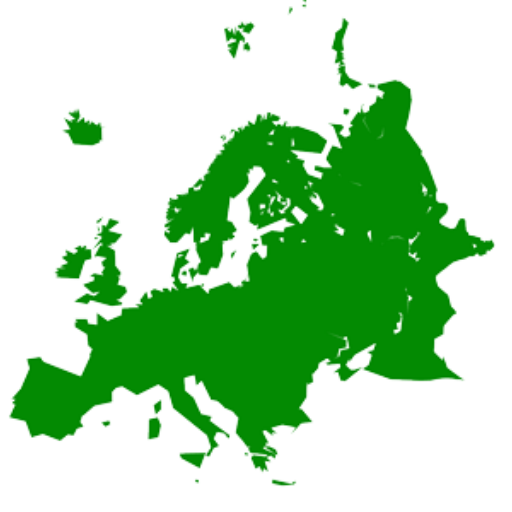 States of Europe
States of Europe
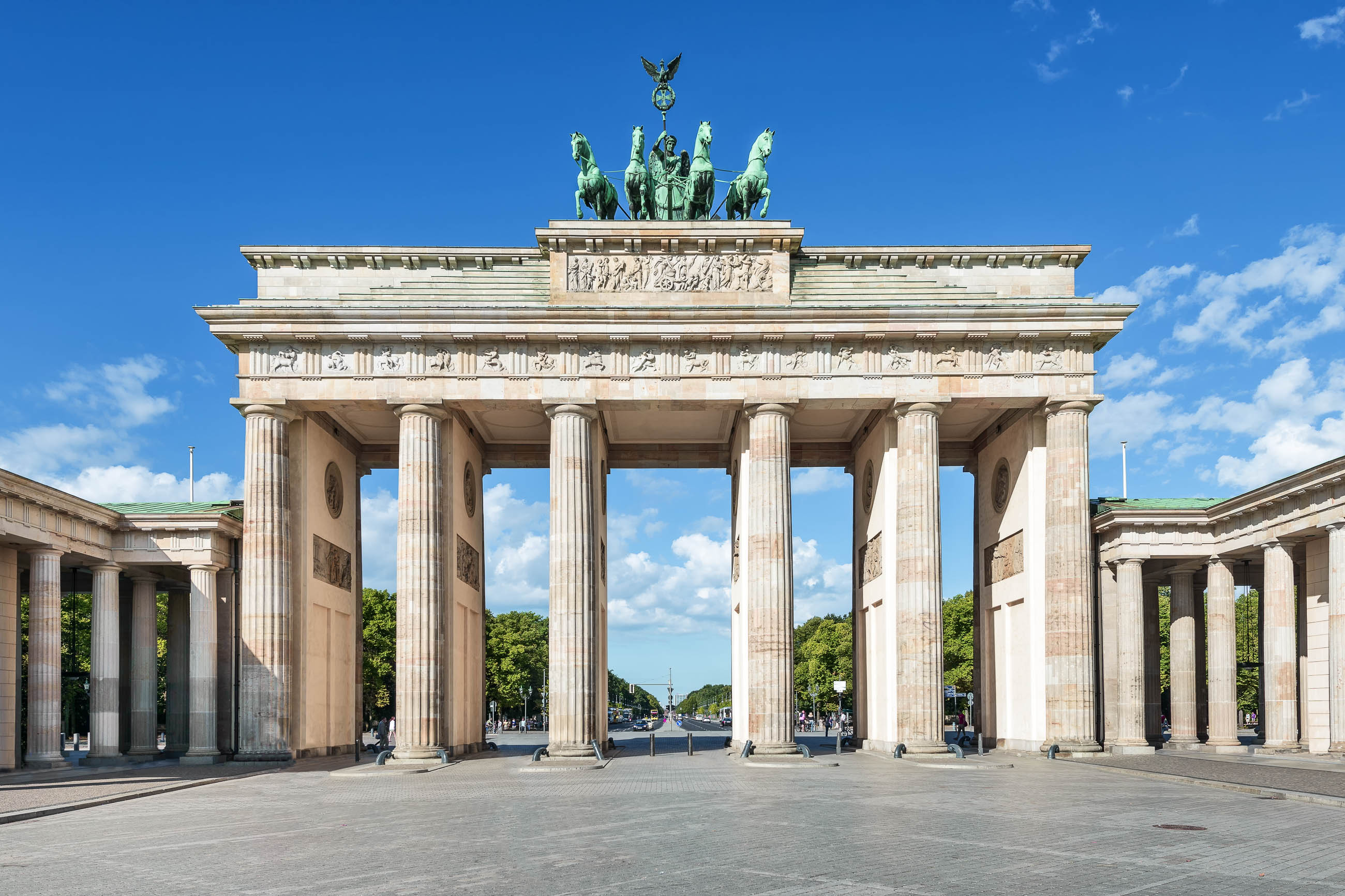
(Vollform: Bundesrepublik Deutschland) ist ein föderal verfasster Staat in Mitteleuropa, der aus den 16 deutschen Ländern besteht. Die Bundesrepublik ist ein freiheitlich-demokratischer Rechtsstaat[8] und stellt die jüngste Ausprägung des deutschen Nationalstaates dar.[9] Mit rund 82,8 Millionen Einwohnern (31. Dezember 2016) zählt Deutschland zu den dicht besiedelten Flächenstaaten.
An Deutschland grenzen neun Staaten, im Norden die Gewässer der Nord- und Ostsee und im Süden das Bergland der Alpen. Es liegt in der gemäßigten Klimazone. Bundeshauptstadt sowie bevölkerungsreichste deutsche Stadt ist Berlin. Weitere bedeutende Metropolen sind Hamburg, München, Köln, Frankfurt, Stuttgart und Düsseldorf; größter Ballungsraum ist das Ruhrgebiet. Deutschland gilt international als das Land mit der zweithöchsten Zahl von Einwanderern nach den Vereinigten Staaten (Stand 2015).[10][11] Seine Bevölkerung ist die zweitälteste und hat mit 1,47 Kindern pro Frau (2014) eine der niedrigsten Geburtenraten der Welt.[12]
Auf dem Territorium des heutigen Deutschlands wurden frühe Siedlungsformen von vor etwa 500.000 Jahren nachgewiesen, wie Funde vom Heidelbergmenschen, vom Neandertaler sowie von einigen der ältesten Kunstwerke der Menschheit aus der Altsteinzeit belegen. Seit der Antike ist die lateinische Bezeichnung Germania für das Siedlungsgebiet der Germanen bekannt, seit dem 4. Jahrhundert ist die Verwendung des Begriffes deutsch in althochdeutscher Form belegt. Das seit dem 10. Jahrhundert bestehende Heilige Römische Reich bestand aus vielen Herrschaftsgebieten und war mit dem 1815 nachfolgenden Deutschen Bund der Ursprung des föderalen deutschen Staates. Dieser entstand erstmals mit der Gründung des Deutschen Reichs im Jahr 1871, woraus eine rasche Wirtschaftsentwicklung vom Agrar- zum Industrieland folgte.
Nach dem Ersten Weltkrieg kam es infolge der Novemberrevolution 1918 zur Bildung der demokratischen Weimarer Republik und zum Friedensvertrag von Versailles. Der nationalsozialistischen Diktatur von 1933 bis 1945 samt verheerendem Zweitem Weltkrieg folgte eine Zeit der Veränderung und Teilung des Staates. Der Gründung der Bundesrepublik als demokratischer westdeutscher Teilstaat mit Inkrafttreten des Grundgesetzes am 24. Mai 1949 folgte wiederum die Gründung der sozialistischen DDR am 7. Oktober 1949 als ostdeutscher Teilstaat.[13] Nach der friedlichen Revolution 1989 folgte die Wiedervereinigung beider Landesteile am 3. Oktober 1990; seitdem wird der Tag der Deutschen Einheit als nationaler Feiertag begangen.
Deutschland ist Gründungsmitglied des Europarates und der Europäischen Union sowie deren bevölkerungsreichstes Land. Mit 18 anderen EU-Mitgliedstaaten bildet es eine Währungsunion, die Eurozone. Es ist Mitglied der UN, der OECD, der OSZE, der NATO, der G7 und der G20. Die Bundesrepublik Deutschland gilt als einer der politisch einflussreichsten Staaten Europas und ist ein gesuchtes Partnerland auf globaler Ebene.[14]
Gemessen am Bruttoinlandsprodukt ist Deutschland die größte Volkswirtschaft Europas und die viertgrößte der Welt.[5] Im Jahr 2015 war es die drittgrößte Export- und Importnation.[15] Es ist marktwirtschaftlich geprägt. Aufgrund der Rohstoffarmut und der Automatisierung der Industrie entwickelt sich das Land, das stark von der Qualität seines Bildungssystems abhängt, zunehmend zur Informations- und Wissensgesellschaft.[16] Gemäß dem Index der menschlichen Entwicklung zählt Deutschland zu den sehr hoch entwickelten Ländern.[17]
Die deutsche Sprache ist die meistgesprochene Muttersprache und nach Englisch die zweithäufigste Fremdsprache in der Europäischen Union; die Zahl ihrer Sprecher rangiert weltweit auf dem zehnten Platz. Die Kultur Deutschlands hat vielschichtige und weltbekannte Ausdrucksformen hervorgebracht, etwa in der Kunst und Architektur, der Musik, der Philosophie, der Filmkultur, der Küche, der Traditionspflege, im Design, im Sport, in der Wissenschaft und der Wirtschaft. Das UNESCO-Welterbe in Deutschland sowie die Vielfalt der Kulturdenkmale und Altstädte ist umfangreich. Eine Vielzahl von National- und Naturparks sind im Land ausgewiesen.
德意志联邦共和国(德语:Bundesrepublik Deutschland、![]() 发音(帮助·信息))简称德国(德语:Deutschland)[参 7],是一个位于欧洲的联邦议会共和制国家,国家元首为联邦总统,政府首脑为联邦总理。它由16个联邦州组成,首都与最大城市为柏林。其国土面积约35.7万平方公里,南北距离为876公里,东西相距640公里,从北部的北海与波罗的海延伸至南部的阿尔卑斯山[参 8]。气候温和,季节分明。德国人口约8,180万,为欧洲联盟中人口最多的国家,也是世界第二大移民目的地,仅次于美国[参 9]。
发音(帮助·信息))简称德国(德语:Deutschland)[参 7],是一个位于欧洲的联邦议会共和制国家,国家元首为联邦总统,政府首脑为联邦总理。它由16个联邦州组成,首都与最大城市为柏林。其国土面积约35.7万平方公里,南北距离为876公里,东西相距640公里,从北部的北海与波罗的海延伸至南部的阿尔卑斯山[参 8]。气候温和,季节分明。德国人口约8,180万,为欧洲联盟中人口最多的国家,也是世界第二大移民目的地,仅次于美国[参 9]。
在50万年前的旧石器时代晚期,海德堡人及其后代尼安德特人生活在今德国中部。自古典时代以来各日耳曼部族开始定居于今日德国的北部地区。公元1世纪时,有罗马人著作的关于“日耳曼尼亚”的历史记载。在公元4到7世纪的民族迁徙期,日耳曼部族逐渐向欧洲南部扩张。自公元10世纪起,德意志领土组成神圣罗马帝国的核心部分[参 10]。16世纪时,德意志北部地区成为宗教改革中心。1871年,在普鲁士主导之下,多数德意志邦国统一并加入德意志帝国。在第一次世界大战和1918-1919年德国革命后,德意志帝国解体,议会制的魏玛共和国取而代之。1933年国家社会主义党获取政权并建立独裁统治,最终导致第二次世界大战及系统性种族灭绝的发生。在战败并经历同盟国军事占领后,两个德国分别建立:德意志民主共和国和德意志联邦共和国。在1990年10月3日重新统一成为现在的德国。
德国是世界大国之一,其国内生产总值以国际汇率计居世界第四,以购买力平价计居世界第五。其诸多工业和科技部门位居世界前列,例如全球驰名的德国车厂、精密部件等,为世界第三大出口国。德国为发达国家,生活水平居世界前列。德国人也以热爱大自然闻名,都市绿化率极高,也是欧洲再生能源大国,是可持续发展经济的样板,除了强调环境保护与自然生态保育,在人为饲养活体的态度十分严谨,不但获得大量外汇和资讯优势,其动物保护法律管束、生命教育水准也是首屈一指的,在高等教育方面并提供免费大学教育[参 11],并具备完善的社会保障制度和医疗体系,催生出拜尔等大药厂。
德国为1993年欧洲联盟建立时的创始国之一,为申根区一部分,并于1999年推动欧元区的建立。德国亦为联合国、北大西洋公约组织、八国集团、20国集团及经济合作与发展组织成员。其军事开支总额居世界第九。
德语是欧盟境内使用人数最多的母语。德国文化的丰富层次和对世界的影响表现在其美术和建筑、音乐、哲学以及电影等等。德国的文化遗产主要以老城为代表。另外国家公园和自然公园共计有上百处。
ドイツ連邦共和国(ドイツれんぽうきょうわこく、独: Bundesrepublik Deutschland)、通称ドイツ(独: Deutschland)は、中央ヨーロッパ西部に位置する連邦共和制国家。首都および最大の都市はベルリン州。南がスイスとオーストリア、北にデンマーク、西をオランダとベルギーとルクセンブルク、東はポーランドとチェコとそれぞれ国境を接する。
欧州大陸における政治的・経済的な主要国であり、歴史上、多くの文化・科学・技術分野における重要な指導国でもある。人口は8300万人で、これは欧州連合において最大である。同国は限定的主権を有する16の州によって構成される。国土の総面積は35万7386平方キロメートルであり、主に温暖な気候に属する。かつて「西ドイツ」と呼ばれていた時代は「西欧」に分類されていたが、東ドイツ(ドイツ民主共和国)の民主化と東西ドイツの統一により「中欧」または「中西欧」に分類されるようになっている。
ドイツ経済の規模は、対米ドル名目為替レートによって計算される米ドル建て名目GDP(MERベースGDP)で世界第4位であり、対米ドル購買力平価によって計算される米ドル建て実質GDP(PPPベースGDP)で世界第5位である。技術及び産業分野における世界的なリーダーとして、世界第3位の輸出国かつ世界第3位の輸入国である。世界最古のユニバーサルヘルスケア制度を含む、包括的な社会保障を特色とする非常に高い生活水準が実現されている先進国である。豊かな政治及び文化の歴史で知られ、影響力ある多数の芸術家、音楽家、映画人、哲学者、科学者及び技術者、起業家の故国である。
1993年に欧州連合へ発展した1957年の欧州諸共同体の原加盟国であるほか、1995年以来シェンゲン圏の一員で、1999年以降はユーロ圏の一員でもある。また、国際連合、欧州評議会、NATO、G7、G20、OECDの主要なメンバーであり、欧州の大国「ビッグ4」や列強の一国に数えられる。アメリカ合衆国に次ぎ、ドイツは世界第2位の移住地である[1]。
Germany (German: Deutschland, pronounced [ˈdɔʏtʃlant] (![]() listen)), officially the Federal Republic of Germany,[e] is a country in Central Europe. It is the second-most populous country in Europe after Russia, and the most populous member state of the European Union. Germany is situated between the Baltic and North seas to the north, and the Alps to the south; it covers an area of 357,022 square kilometres (137,847 sq mi), with a population of over 83 million within its 16 constituent states. It borders Denmark to the north, Poland and the Czech Republic to the east, Austria and Switzerland to the south, and France, Luxembourg, Belgium, and the Netherlands to the west. The nation's capital and largest city is Berlin, and its financial centre is Frankfurt; the largest urban area is the Ruhr.
listen)), officially the Federal Republic of Germany,[e] is a country in Central Europe. It is the second-most populous country in Europe after Russia, and the most populous member state of the European Union. Germany is situated between the Baltic and North seas to the north, and the Alps to the south; it covers an area of 357,022 square kilometres (137,847 sq mi), with a population of over 83 million within its 16 constituent states. It borders Denmark to the north, Poland and the Czech Republic to the east, Austria and Switzerland to the south, and France, Luxembourg, Belgium, and the Netherlands to the west. The nation's capital and largest city is Berlin, and its financial centre is Frankfurt; the largest urban area is the Ruhr.
Various Germanic tribes have inhabited the northern parts of modern Germany since classical antiquity. A region named Germania was documented before AD 100. In the 10th century, German territories formed a central part of the Holy Roman Empire. During the 16th century, northern German regions became the centre of the Protestant Reformation. Following the Napoleonic Wars and the dissolution of the Holy Roman Empire in 1806, the German Confederation was formed in 1815. In 1871, Germany became a nation-state when most of the German states unified into the Prussian-dominated German Empire. After World War I and the German Revolution of 1918–1919, the Empire was replaced by the semi-presidential Weimar Republic. The Nazi seizure of power in 1933 led to the establishment of a dictatorship, World War II, and the Holocaust. After the end of World War II in Europe and a period of Allied occupation, Germany was divided into the Federal Republic of Germany, generally known as West Germany, and the German Democratic Republic, East Germany. The Federal Republic of Germany was a founding member of the European Economic Community and the European Union, while the German Democratic Republic was a communist Eastern Bloc state and member of the Warsaw Pact. After the fall of communism, German reunification saw the former East German states join the Federal Republic of Germany on 3 October 1990—becoming a federal parliamentary republic.
Germany is a great power with a strong economy; it has the largest economy in Europe, the world's fourth-largest economy by nominal GDP, and the fifth-largest by PPP. As a global leader in several industrial, scientific and technological sectors, it is both the world's third-largest exporter and importer of goods. As a developed country, which ranks very high on the Human Development Index, it offers social security and a universal health care system, environmental protections, and a tuition-free university education. Germany is a member of the United Nations, NATO, the G7, the G20, and the OECD. It has the third-greatest number of UNESCO World Heritage Sites.
L'Allemagne (/almaɲ/ ; en allemand : Deutschland /ˈdɔʏtʃlant/ Écouter), en forme longue la République fédérale d'Allemagneb, abrégée en RFA (en allemand : Bundesrepublik Deutschland /ˈbʊn.dəs.ʁe.puˌblik ˈdɔʏtʃ.lant/ Écouter, abrégée en BRD), est un État d'Europe centrale, et selon certaines définitions d'Europe de l'Ouest, entouré par la mer du Nord, le Danemark et la mer Baltique au nord, par la Pologne à l'est-nord-est, par la Tchéquie à l'est-sud-est, par l'Autriche au sud-sud-est, par la Suisse au sud-sud-ouest, par la France au sud-ouest, par la Belgique et le Luxembourg à l'ouest, enfin par les Pays-Bas à l'ouest-nord-ouest. Décentralisée et fédérale, l'Allemagne compte quatre métropoles de plus d'un million d'habitants : la capitale Berlin, ainsi que Hambourg, Munich et Cologne. Le siège du gouvernement est situé dans la ville de Berlin et dans la ville fédérale de Bonn. Francfort-sur-le-Main est considérée comme la capitale financière de l'Allemagnec : dans cette ville se trouve le siège de la Banque centrale européenne.
Beaucoup de peuples germaniques occupent le Nord du territoire actuel depuis l'Antiquité classique. Durant ce que l'on nomme les invasions barbares, les tribus germaniques se rapprochent du Sud de ce territoire. À partir du Xe siècle, les territoires forment la partie centrale du Saint-Empire romain germanique. Au XVIe siècle, le Nord de l'Allemagne est au cœur de la réforme protestante. Le pangermanisme entraîne l'unification des États allemands en 1871 pour former l'Empire allemand. Après la Première Guerre mondiale, et la révolution allemande de 1918-1919, l'Empire est remplacé par la république parlementaire de Weimar. L'accès au pouvoir des nazis en 1933 mène à la Seconde Guerre mondiale, au cours de laquelle le régime totalitaire connu sous le nom de Troisième Reich, fondé sur un racisme et un antisémitisme singulier, et dirigé par le dictateur Adolf Hitler, perpètre des crimes de masse en Europe, dont la Shoah, et laisse le pays en ruines. Après sa défaite militaire en 1945, l'Allemagne perd des territoires et — par la volonté des vainqueurs alliés qui entrent dans la « guerre froide » — est contrainte de se scinder en deux nations : à l'ouest un État démocratique, la République fédérale d'Allemagne (en abrégé RFA) et, à l'est, la République démocratique allemande (en abrégé RDA) sous emprise de l'Union soviétique. Le mur de Berlin — qui symbolise cette division dans l'ancienne capitale — tombe le 9 novembre 1989 et l'Allemagne est à nouveau réunifiée le 3
 Luiz Inácio Lula da Silva
Luiz Inácio Lula da Silva

 Party and government
Party and government

 Party and government
Party and government
 *President or Chairman
*President or Chairman

 Party and government
Party and government
 Group of the twenty most important industrial and emerging countries
Group of the twenty most important industrial and emerging countries

 Party and government
Party and government
 BRICS
BRICS

路易斯·伊纳西奥·卢拉·达席尔瓦(葡萄牙语:Luiz Inácio Lula da Silva,巴西葡萄牙语发音:[luˈiz iˈnasju ˈlulɐ dɐ ˈsiwvɐ] (ⓘ);1945年10月27日—),通称“卢拉”(Lula),是巴西左翼政治家,巴西第35任(2003年—2010年)及第39任(现任)总统,巴西劳工党创始成员。巴西历史上第一位工人出身的总统、第二位通过直接选举获得连任的总统。
Luiz Inácio Lula da Silva [luˈiz iˈnasju ˈlulɐ da ˈsiwvɐ] (* 27. Oktober 1945 als Luiz Inácio da Silva in Caetés, Pernambuco), auch bekannt als Lula da Silva, jedoch meist nur Lula genannt, ist ein brasilianischer Politiker. Er war vom 1. Januar 2003 bis zum 1. Januar 2011 Präsident Brasiliens und ist dies erneut seit dem 1. Januar 2023.
 *Track and field athletics
*Track and field athletics
 4x100 m Woman
4x100 m Woman
 *Track and field athletics
*Track and field athletics
 4x400 m Woman
4x400 m Woman
 *Track and field athletics
*Track and field athletics
 4x100 m Men
4x100 m Men
 *Track and field athletics
*Track and field athletics
 4x400 m Men
4x400 m Men
 *United States presidential election
*United States presidential election
 Atomic bomb
Atomic bomb

 History
History
 M 1500 - 2000 AD
M 1500 - 2000 AD

 History
History

 History
History

 History
History

 History
History
 N 2000 - 2100 AD
N 2000 - 2100 AD
 Leichtathletik-Weltmeisterschaften
Leichtathletik-Weltmeisterschaften
 2017 London
2017 London
 Leichtathletik-Weltmeisterschaften
Leichtathletik-Weltmeisterschaften
 2015 Beijing
2015 Beijing
 Leichtathletik-Weltmeisterschaften
Leichtathletik-Weltmeisterschaften
 2013 Moskau
2013 Moskau
 Leichtathletik-Weltmeisterschaften
Leichtathletik-Weltmeisterschaften
 2009 Berlin
2009 Berlin
 Leichtathletik-Weltmeisterschaften
Leichtathletik-Weltmeisterschaften
 2007 Osaka
2007 Osaka
 Leichtathletik-Weltmeisterschaften
Leichtathletik-Weltmeisterschaften
 2011 Daegu
2011 Daegu
 Leichtathletik-Weltmeisterschaften
Leichtathletik-Weltmeisterschaften
 2005 Helsinki
2005 Helsinki
 Leichtathletik-Weltmeisterschaften
Leichtathletik-Weltmeisterschaften
 2003 Saint-Denis
2003 Saint-Denis
 Leichtathletik-Weltmeisterschaften
Leichtathletik-Weltmeisterschaften
 1999 Seville
1999 Seville
 Leichtathletik-Weltmeisterschaften
Leichtathletik-Weltmeisterschaften
 1997 Athens
1997 Athens
 Leichtathletik-Weltmeisterschaften
Leichtathletik-Weltmeisterschaften
 1995 Gothenburg
1995 Gothenburg
 Leichtathletik-Weltmeisterschaften
Leichtathletik-Weltmeisterschaften
 1993 Stuttgart
1993 Stuttgart
 Leichtathletik-Weltmeisterschaften
Leichtathletik-Weltmeisterschaften
 1991 Tokyo
1991 Tokyo
 Leichtathletik-Weltmeisterschaften
Leichtathletik-Weltmeisterschaften
 1987 Rome
1987 Rome
 Leichtathletik-Weltmeisterschaften
Leichtathletik-Weltmeisterschaften
 1983 Helsinki
1983 Helsinki

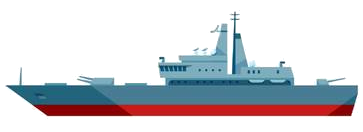
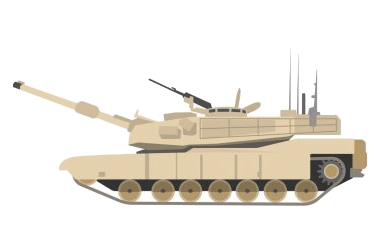
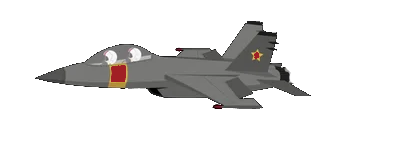
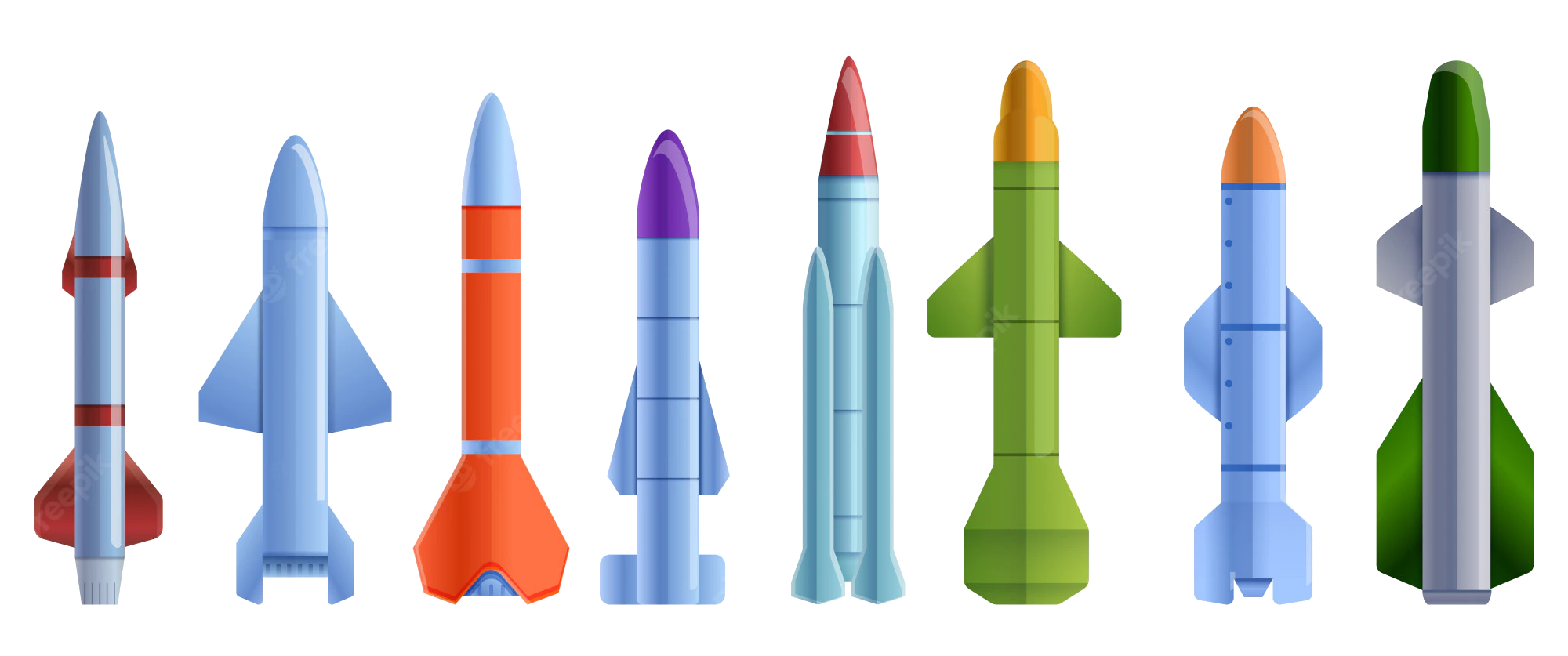 Military, defense and equipment
Military, defense and equipment
 Nuclear Weapon
Nuclear Weapon

 Mitglieder der NATO
Mitglieder der NATO

 Party and government
Party and government
 Group of the twenty most important industrial and emerging countries
Group of the twenty most important industrial and emerging countries

 Party and government
Party and government
 Group of Seven,G7
Group of Seven,G7
 United States
United States

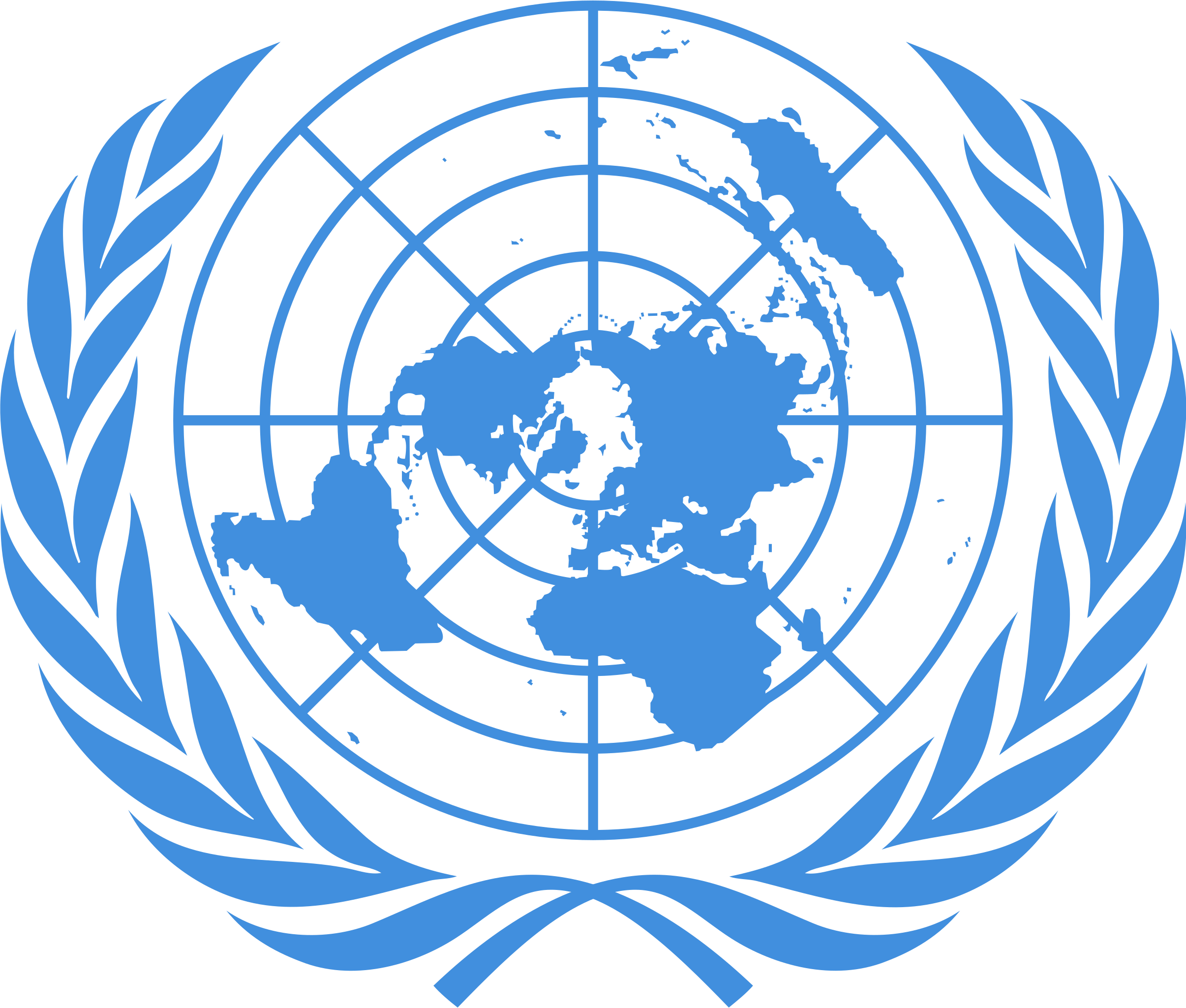 United Nations
United Nations
 United Nations Security Council
United Nations Security Council
 Hydrogen bomb
Hydrogen bomb

Die Vereinigten Staaten von Amerika (englisch United States of America; abgekürzt USA), kurz auch Vereinigte Staaten (englisch United States, abgekürzt U.S., US) genannt und häufig auch umgangssprachlich verkürzt zu Amerika (englisch America), sind eine föderale Republik. Diese besteht aus 50 Bundesstaaten, einem Bundesdistrikt (der Hauptstadt Washington, D.C.), fünf größeren Territorien und etlichen Inselterritorien. Die 48 zusammenhängenden Continental United States (häufig Lower 48 genannt) sowie Alaska liegen in Nordamerika, während Hawaii und kleinere Außengebiete im Pazifik beziehungsweise in der Karibik liegen. Das Land weist eine sehr hohe geographische und klimatische Diversität mit einer großen Vielfalt an Tier- und Pflanzenarten auf.
Die Vereinigten Staaten von Amerika sind der drittgrößte Staat der Erde, gemessen an der Fläche von 9,83 Millionen Quadratkilometern[3] (nach Russland und Kanada) und gemessen an der Bevölkerung von etwa 328 Millionen Einwohnern (nach China und Indien). Die nach Einwohnerzahl größte Stadt ist New York City, bedeutende Metropolregionen sind Los Angeles, Chicago, Dallas, Houston, Philadelphia, Washington, Miami, Atlanta, Boston und San Francisco, mit jeweils über 5 Millionen Einwohnern. Der Grad der Urbanisierung liegt bei 81,96 Prozent (Stand: 2015).[9]
Bedingt durch die Einwanderung aus einer Vielzahl von Ländern sind die Vereinigten Staaten eines der ethnisch multikulturellsten Länder. Anders als in 32 Bundesstaaten gibt es auf Bundesebene keine gesetzliche Amtssprache, jedoch herrscht Englisch als De-Facto-Amtssprache vor. Im Südwesten sowie in Miami ist zusätzlich die spanische Sprache weit verbreitet. Insgesamt waren 2015 mehr als 350 Sprachen in heimischem Gebrauch, davon allein 150 indigene. Darunter waren als größte die der Yupik in Alaska, der Dakota aus der Sioux-Sprachfamilie sowie die Sprache der Apachen in Gebrauch, dann Keres, die Sprache der Pueblo-Indianer, und Cherokee.[10]
Paläoindianer wanderten vor mehr als 13.000 Jahren aus Asien in das nordamerikanische Festland der heutigen Vereinigten Staaten ein (Buttermilk Creek Complex), nachdem sie mehrere Jahrtausende zuvor das heute zu den USA gehörende Alaska besiedelt hatten. Die europäische Kolonisierung begann etwa um 1600 vorwiegend aus England, allerdings in langwieriger Auseinandersetzung mit Frankreich. Die Vereinigten Staaten gingen aus den 13 Kolonien an der Atlantikküste hervor. Streit zwischen Großbritannien und den amerikanischen Kolonien führte zur Amerikanischen Revolution. Am 4. Juli 1776 verabschiedeten Delegierte der 13 Kolonien die Unabhängigkeitserklärung der Vereinigten Staaten und somit die Gründung der Vereinigten Staaten von Amerika. Der Amerikanische Unabhängigkeitskrieg, der mit der Anerkennung der Unabhängigkeit endete, war der erste erfolgreiche Unabhängigkeitskrieg gegen eine europäische Kolonialmacht. Die heutige Verfassung wurde am 17. September 1787 verabschiedet. Bisher wurden 27 Zusatzartikel ergänzt. Die ersten zehn Zusatzartikel, die gemeinsam als Bill of Rights bezeichnet werden, wurden 1791 ratifiziert und garantieren eine Vielzahl von unveräußerlichen Rechten.
Angetrieben von der Doktrin Manifest Destiny begannen die Vereinigten Staaten eine Expansion über Nordamerika, die sich über das 19. Jahrhundert erstreckte. Dies schloss die gewaltsame Vertreibung indigener indianischer Stämme, den Erwerb neuer Territorien u. a. im Mexikanisch-Amerikanischen Krieg und die Gründung neuer Bundesstaaten ein. Der Amerikanische Bürgerkrieg führte 1865 zum Ende der legalen Sklaverei in den Vereinigten Staaten. Zum Ende des 19. Jahrhunderts erreichten der Staat eine Ausdehnung bis zum Pazifik, ihre Wirtschaft wurde zur größten weltweit. Der Spanisch-Amerikanische Krieg und der Erste Weltkrieg bestätigten die Rolle der Vereinigten Staaten als globale Militärmacht. Aus dem Zweiten Weltkrieg gingen die USA als Supermacht und als erstes Land mit Atomwaffen hervor und wurden eines von fünf ständigen Mitgliedern im Sicherheitsrat der Vereinten Nationen. Nach Ende des Kalten Krieges und dem Zerfall der Sowjetunion sind die USA die einzige verbliebene Supermacht. Sie sind Gründungsmitglied der Vereinten Nationen, der Organisation Amerikanischer Staaten (OAS) und vieler weiterer internationaler Organisationen. Ihr politischer und kultureller Einfluss ist weltweit groß.
Die Vereinigten Staaten sind ein industrialisierter Staat und die größte Volkswirtschaft mit einem Bruttoinlandsprodukt in Höhe von 18,5 Billionen US-Dollar im Jahr 2016, was 25 % der nominellen oder 17 % der kaufkraftbereinigten globalen Wirtschaftsleistung entsprach.[7] Das Land hatte 2016 das achthöchste Pro-Kopf-Einkommen. Laut der Weltbank ist die Einkommensungleichverteilung in den Vereinigten Staaten eine der höchsten unter den OECD-Staaten.[11] Die Wirtschaftsleistung des Landes wird durch den Reichtum an natürlichen Ressourcen, eine gut entwickelte Infrastruktur und eine hohe durchschnittliche Produktivität begünstigt.[12][13] Obwohl die Wirtschaftsstruktur gemeinhin als postindustriell angesehen wird, ist das Land nach wie vor einer der weltgrößten Güterproduzenten.[14] Das Land war 2016 für 36 % der weltweiten Militärausgaben verantwortlich und liegt damit auf Platz 1, gefolgt von China mit 13 % und Russland mit 4,1 %.[15] Der in Folge der Terroranschläge am 11. September 2001 ausgerufene Ausnahmezustand ist seit 2001 in Kraft.[16]
美国是一个高度发达的资本主义国家,其政治、教育、经济、军事、文化、创新等实力领衔全球。作为世界第一军事大国,其高等教育水平和科研技术水平以及航空航天技术方面,也是当之无愧的世界第一,其科研经费投入之大、研究型高校企业之多、科研成果之丰富堪称世界典范。同时,美国还拥有苹果、微软、戴尔、惠普、波音等一系列世界著名企业。
美利坚合众国(英语:United States of America,缩写为 U.S.A.、通称为 United States、缩写为U.S.、或America、The States),中文通称美国,是由其下辖50个州、华盛顿哥伦比亚特区、五个自治领土及外岛共同组成的联邦共和国[注 1]。美国本土48州和联邦特区位于北美洲中部,东临大西洋,西临太平洋,北面是加拿大,南部和墨西哥及墨西哥湾接壤,本土位于温带、副热带地区。阿拉斯加州位于北美大陆西北方,东部为加拿大,西隔白令海峡和俄罗斯相望;夏威夷州则是太平洋中部的群岛。美国在加勒比海和太平洋还拥有多处境外领土和岛屿地区。此外,美国还在全球140多个国家和地区拥有着374个海外军事基地。
美国拥有982万平方公里国土面积,位居世界第三(依陆地面积定义为第四大国);同时拥有接近超过3.3亿人口,为世界第三人口大国。因为有着来自世界各地的大量移民,它是世界上民族和文化最多元的国家之一[14]。美国地形与气候复杂多样,是多种野生动物的家园[15]。
一万五千多年前,古印第安人自亚洲迁徙至北美大陆[16]。16世纪欧洲开始殖民北美。现今的合众国起始于东海岸的13个英属美洲殖民地。欧洲七年战争后,大不列颠王国与其殖民地之间的争议愈发剧烈,最终导致在1775年爆发美国革命。1776年7月4日,正与大不列颠进行独立战争的各殖民地派出代表,协同一致发表《独立宣言》。战争终止于1783年,大不列颠王国承认这13个北美殖民地脱离管辖而独立,与其签订《巴黎条约》。这场战争也是第一场成功脱离欧洲殖民帝国的独立战争[17]。1781年,《邦联条例》在邦联13个构成州获得通过,共同组成了邦联议会。1787年《美利坚合众国宪法》完稿,将“美利坚合众国”改制为联邦体制,联邦政府随之成立。1791年,合称为权利法案的十条宪法修正案获得批准,担保了基本民权。
美国自19世纪开始在北美通过强行移置原住民,征服及购买等方法大力扩张领土,随着逐渐不断地承认扩张领地为新州份,至1848年美国疆域已横跨整个北美大陆[18]。19世纪下半叶爆发的内战,使曾经合法的奴隶制度得以终结[19][20]。在19世纪末,美国已将其领土延伸到太平洋的夏威夷。美国经济在工业革命的推动下,自那时起也开始蓬勃发展[21]。随后美西战争的胜利,使美国势力进入加勒比海地区及太平洋西部;而参与第一次世界大战则奠定其作为一个全球性军事力量的地位。尽管在1930年代经历经济大萧条,美国在第二次世界大战获得胜利之后崛起成为超级大国。作为联合国安全理事会常任理事国,美国是世界上第一个研发出核武器,也是唯一一个曾将其投入实战的国家。战后美国与苏联进行了数十年冷战,顶峰时期的太空竞赛促使了人类第一次登月计划的成功。在1991年苏联解体后,美国成为世上唯一超级强国[22]。
美国作为一个高度发达国家,是世界上最大的进口国及第二大的商品出口国,国内生产总值按国际汇率排名世界第一、而依购买力平均则位列第二。在国民平均薪资[23]、人类发展指数、人均国内生产总值以及人均生产力[24]等社会经济学表现指标上,美国均处于世界领先地位。美国经济已步入后工业时代,服务行业占据经济主导地位,位列世界第一。同时,其生产制造业规模也极为庞大,位居于世界第二[25]。仅占据全世界4.4%人口的美国[26],贡献了世界四分之一的国内生产总值和三分之一的全球军事开支[27],这使其在经济和军事上均处于全世界最重要的地位。美国在政治和文化上是一支世界显著并影响深远的力量,也在科学研究和技术创新上占据世界领导地位[28]。美国是联合国、世界银行、国际货币基金组织、美洲国家组织等的创始成员国。
アメリカ合衆国(アメリカがっしゅうこく、英語: United States of America)、通称アメリカ、米国(べいこく)は、50の州および連邦区から成る連邦共和国である[6][7]。
アメリカ本土の48州および同国首都ワシントンD.C.(コロンビア特別区)は、カナダとメキシコの間の北アメリカ中央に位置する。
アラスカ州は北アメリカ北西部の角に位置し、東ではカナダと、西ではベーリング海峡をはさんでロシアと国境を接している。ハワイ州は中部太平洋における島嶼群である。
同国は、太平洋およびカリブに5つの有人の海外領土および9つの無人の海外領土を有する。985万平方キロメートル (km2) の総面積は世界第3位または第4位、3億1千7百万人の人口は世界第3位である。
同国は世界で最も民族的に多様かつ多文化な国の1つであり、これは多数の国からの大規模な移住の産物とされている[8]。
また同国の広大な国土における地理および気候も極めて多様であり、多種多様な野生生物が存在する。
米国は先進国かつ世界最大級の国民経済を有する[9]。同国経済は、豊富な天然資源と高度な労働者の生産性により支えられている[10]。同国経済は脱工業化社会だとされている一方、世界最大の製造国のうちの1つであり続けている[11]。同国は世界の軍事支出の37%を占め[12]、世界最高位の経済・軍事大国であり、多大な影響を及ぼす政治・文化的勢力であり、科学研究・技術革新におけるリーダー的存在とされている[13]。
The United States of America (USA), commonly known as the United States (U.S. or US) or America, is a country composed of 50 states, a federal district, five major self-governing territories, and various possessions.[f] At 3.8 million square miles (9.8 million km2), the United States is the world's third or fourth largest country by total area[g] and is slightly smaller than the entire continent of Europe's 3.9 million square miles (10.1 million km2). With a population of over 327 million people, the U.S. is the third most populous country. The capital is Washington, D.C., and the largest city by population is New York. Forty-eight states and the capital's federal district are contiguous in North America between Canada and Mexico. The State of Alaska is in the northwest corner of North America, bordered by Canada to the east and across the Bering Strait from Russia to the west. The State of Hawaii is an archipelago in the mid-Pacific Ocean. The U.S. territories are scattered about the Pacific Ocean and the Caribbean Sea, stretching across nine official time zones. The extremely diverse geography, climate, and wildlife of the United States make it one of the world's 17 megadiverse countries.[19]
Paleo-Indians migrated from Siberia to the North American mainland at least 12,000 years ago.[20] European colonization began in the 16th century. The United States emerged from the thirteen British colonies established along the East Coast. Numerous disputes between Great Britain and the colonies following the French and Indian War led to the American Revolution, which began in 1775, and the subsequent Declaration of Independence in 1776. The war ended in 1783 with the United States becoming the first country to gain independence from a European power.[21] The current constitution was adopted in 1788, with the first ten amendments, collectively named the Bill of Rights, being ratified in 1791 to guarantee many fundamental civil liberties. The United States embarked on a vigorous expansion across North America throughout the 19th century, acquiring new territories,[22] displacing Native American tribes, and gradually admitting new states until it spanned the continent by 1848.[22]
During the second half of the 19th century, the Civil War led to the abolition of slavery.[23][24] By the end of the century, the United States had extended into the Pacific Ocean,[25] and its economy, driven in large part by the Industrial Revolution, began to soar.[26] The Spanish–American War and World War I confirmed the country's status as a global military power. The United States emerged from World War II as a global superpower, the first country to develop nuclear weapons, the only country to use them in warfare, and a permanent member of the United Nations Security Council. During the Cold War, the United States and the Soviet Union competed in the Space Race, culminating with the 1969 Moon landing. The end of the Cold War and the collapse of the Soviet Union in 1991 left the United States as the world's sole superpower.[27]
The United States is the world's oldest surviving federation. It is a federal republic and a representative democracy. The United States is a founding member of the United Nations, World Bank, International Monetary Fund, Organization of American States (OAS), and other international organizations. The United States is a highly developed country, with the world's largest economy by nominal GDP and second-largest economy by PPP, accounting for approximately a quarter of global GDP.[28] The U.S. economy is largely post-industrial, characterized by the dominance of services and knowledge-based activities, although the manufacturing sector remains the second-largest in the world.[29] The United States is the world's largest importer and the second largest exporter of goods, by value.[30][31] Although its population is only 4.3% of the world total,[32] the U.S. holds 31% of the total wealth in the world, the largest share of global wealth concentrated in a single country.[33]
Despite wide income and wealth disparities, the United States continues to rank very high in measures of socioeconomic performance, including average wage, human development, per capita GDP, and worker productivity.[34][35] The United States is the foremost military power in the world, making up a third of global military spending,[36] and is a leading political, cultural, and scientific force internationally.[37]
Les États-Unis, en forme longue les États-Unis d'Amérique4 (en anglais : United States et United States of America, également connus sous les abréviations US et USA), sont un pays transcontinental dont l'essentiel du territoire se situe en Amérique du Nord. Les États-Unis ont la structure politique d'une république constitutionnelle fédérale à régime présidentiel composée de cinquante États, dont quarante-huit sont adjacents et forment le Mainland. Celui-ci est encadré par l'océan Atlantique à l'est et l'océan Pacifique à l'ouest, et se trouve bordé au nord par le Canada et au sud par le Mexique. Les deux États non limitrophes sont l'Alaska, situé à l'ouest du Canada, et Hawaï, un archipel situé au milieu de l'océan Pacifique-nord. De plus, le pays comprend quatorze territoires insulaires disséminés dans la mer des Caraïbes et le Pacifique. La géographie et le climat du pays sont extrêmement diversifiés, abritant une grande variét

 Geography
Geography
 Caribbean
Caribbean
 Mexico
Mexico

 Party and government
Party and government
 Group of the twenty most important industrial and emerging countries
Group of the twenty most important industrial and emerging countries


Mexiko (spanisch: México oder Méjico [ˈmexiko], nahuatl: Mexihco [meː'ʃiʔko]), amtlich Vereinigte Mexikanische Staaten, spanisch: Estados Unidos Mexicanos, ist eine Bundesrepublik in Nordamerika, die 31 Bundesstaaten und den Hauptstadtdistrikt Mexiko-Stadt umfasst. Im Norden grenzt Mexiko an die Vereinigten Staaten von Amerika (USA), im Süden und Westen an den Pazifischen Ozean, im Südosten an Guatemala, Belize und an das Karibische Meer, im Osten an den Golf von Mexiko. Mit einer Gesamtfläche von fast zwei Millionen Quadratkilometern ist Mexiko das fünftgrößte Land auf dem amerikanischen Doppelkontinent, global liegt das Land an vierzehnter Stelle. Weltweit liegt Mexiko mit einer Bevölkerungszahl von etwa 125 Millionen Menschen auf Platz elf und ist das einwohnerreichste spanischsprachige Land.
墨西哥合众国(西班牙语:Estados Unidos Mexicanos, ![]() 聆听 帮助·信息)[9][10][11][12],通称墨西哥(西班牙语:México [ˈmexiko]
聆听 帮助·信息)[9][10][11][12],通称墨西哥(西班牙语:México [ˈmexiko] ![]() 聆听),是北美洲的一个联邦共和制主权国家,北部同美国接壤,南侧和西侧滨临太平洋,东南为伯利兹、危地马拉和加勒比海,东部则为墨西哥湾[13]。其面积达近二百万平方公里(超过760,000平方英里)[12],为美洲面积第五大国家和世界面积第十四大国家。其总人口超过1.3亿[14],为世界第十人口大国,西班牙语世界第一人口大国及拉丁美洲第二人口大国。墨西哥为联邦国家,包括三十二个州;其首都和最大城市墨西哥城亦为一州。
聆听),是北美洲的一个联邦共和制主权国家,北部同美国接壤,南侧和西侧滨临太平洋,东南为伯利兹、危地马拉和加勒比海,东部则为墨西哥湾[13]。其面积达近二百万平方公里(超过760,000平方英里)[12],为美洲面积第五大国家和世界面积第十四大国家。其总人口超过1.3亿[14],为世界第十人口大国,西班牙语世界第一人口大国及拉丁美洲第二人口大国。墨西哥为联邦国家,包括三十二个州;其首都和最大城市墨西哥城亦为一州。
前哥伦布时期的墨西哥为诸多先进的中部美洲文明发源地,如奥尔梅克、托尔特克、特奥蒂瓦坎、萨波特克、玛雅和阿兹特克等。1521年,西班牙帝国以墨西哥-特诺奇提特兰为基点征服并殖民了这一地区,并将之建制为新西班牙总督辖区。1821年,在墨西哥独立战争之后,这一辖区宣布独立并受承认为墨西哥。独立后的墨西哥经历了一段动荡期,经济和政治均不稳定。美墨战争(1846–48)后其被迫将位于北部的近三分之一领土割让给美国。19世纪的墨西哥经历了糕点战争、法墨战争、内战、两个帝国以及一段独裁时期。1910年开始的墨西哥革命推翻了独裁统治,最终促成了1917年宪法的订立和现行政治体制的建立。
墨西哥的名义国内生产总值为世界第十五大,国际生产总值(购买力平价)为世界第十一大。墨西哥经济与其北美自由贸易协议(NAFTA)贸易伙伴紧密相关,尤其是美国[15][16]。自1994年起,墨西哥为经济合作与发展组织的首个拉丁美洲成员国。世界银行将其归为中高收入国家[17],分析人士亦称其为一新兴工业化国家[18][19][20][21]。估计至2050年,墨西哥将成为全球第五或第七大经济体[22][23]。该国被认为是一地域大国和中等强国[24][25][26][27],并时常被认为是一新兴强国[28]。墨西哥文化历史遗产丰富,拥有美洲数量第五多和世界第六多的联合国教科文组织世界遗产[29][30][31]。2015年其为世界访客数量第十的国家,国际来访人次达2910万[32][33]。墨西哥为联合国、世界贸易组织、G20峰会和团结谋共识成员国,2014年起成为法语圈国际组织观察员。
メキシコ合衆国(メキシコがっしゅうこく、スペイン語: Estados Unidos Mexicanos)、通称メキシコは、北アメリカ南部に位置する連邦共和制国家。北にアメリカ合衆国と南東にグアテマラ、ベリーズと国境を接し、西は太平洋、東はメキシコ湾とカリブ海に面する。首都はメキシコシティ。メキシコの総人口は約1億3,000万人(2016年時点)で、スペイン語圏においてはもっとも人口の多い国である。GDPは中南米2位[注釈 1]。
Mexico (Spanish: México [ˈmexiko] (![]() listen); Nahuan languages: Mēxihco), officially the United Mexican States (Spanish: Estados Unidos Mexicanos; EUM [esˈtaðos uˈniðoz mexiˈkanos] (
listen); Nahuan languages: Mēxihco), officially the United Mexican States (Spanish: Estados Unidos Mexicanos; EUM [esˈtaðos uˈniðoz mexiˈkanos] (![]() listen)), is a country in the southern portion of North America. It is bordered to the north by the United States; to the south and west by the Pacific Ocean; to the southeast by Guatemala, Belize, and the Caribbean Sea; and to the east by the Gulf of Mexico.[10] Mexico covers 1,972,550 square kilometers (761,610 sq mi)[11] and has approximately 128,649,565 inhabitants,[4] making it the world's 13th-largest country by area, 10th-most populous country, and most populous Spanish-speaking nation. It is a federation comprising 31 states and Mexico City,[12] its capital city and largest metropolis. Other major urban areas include Guadalajara, Monterrey, Puebla, Toluca, Tijuana, Ciudad Juárez, and León.[13]
listen)), is a country in the southern portion of North America. It is bordered to the north by the United States; to the south and west by the Pacific Ocean; to the southeast by Guatemala, Belize, and the Caribbean Sea; and to the east by the Gulf of Mexico.[10] Mexico covers 1,972,550 square kilometers (761,610 sq mi)[11] and has approximately 128,649,565 inhabitants,[4] making it the world's 13th-largest country by area, 10th-most populous country, and most populous Spanish-speaking nation. It is a federation comprising 31 states and Mexico City,[12] its capital city and largest metropolis. Other major urban areas include Guadalajara, Monterrey, Puebla, Toluca, Tijuana, Ciudad Juárez, and León.[13]
Pre-Columbian Mexico traces its origins to 8,000 BC and is identified as one of six cradles of civilization;[14] it was home to many advanced Mesoamerican civilizations, most well-known among them the Maya and the Aztecs. In 1521, the Spanish Empire conquered and colonized the territory from its base in Mexico City, which then became known as New Spain. The Catholic Church played an important role as millions of indigenous inhabitants converted. These populations were heavily exploited to mine rich deposits of precious material, which became a major source of wealth for the Spanish.[15] Mexico became an independent nation state after the successful Mexican War of Independence against Spain in 1821.[16]
The War of Texas Independence in 1836 and the Mexican–American War led to huge territorial losses in Mexico's sparsely populated north, contiguous to the United States. The newly instituted reforms that granted protection to indigenous communities, and curtailed the power of the military and the church, were enshrined in the Constitution of 1857. This triggered the War of the Reform and French intervention. Maximilian Habsburg was installed as emperor by France and Benito Juárez kept an opposing republican government in exile. The following decades were marked by instability and dictatorship of Porfirio Díaz, who sought to modernize Mexico and restore order.[16] The Porfiriato ended with the Mexican Revolution in 1910 and the winning Constitutionalist faction drafted a new 1917 Constitution. The revolutionary generals of the winning northern faction dominated the 1920s and served as presidents, but the 1928 assassination of Alvaro Obregón led to the formation of the Institutional Revolutionary Party in 1929, under which Mexico was a one-party state until 2000.[17][18][19][20]
Mexico is a developing country, ranking 76th on the Human Development Index, but is considered a newly industrialized state by several analysts.[21][22][23][24] It has the world's 15th-largest economy by nominal GDP and the 11th-largest by PPP, with the United States being its largest economic partner.[25][26] The large economy, area, population and politics make Mexico a regional power and a middle power,[27][28][29][30] and is often identified as an emerging power.[31] However, Mexico continues to struggle with social inequalities, poverty and extensive crime; the country ranks poorly on the Global Peace Index.[32] Since 2006, the conflict between the government and drug trafficking syndicates lead to over 120,000 deaths.[33]
Mexico ranks first in the Americas and 7th in the world for the number of UNESCO World Heritage Sites.[34][35][36] Mexico is an ecologically megadiverse country, ranking 5th in the world for its natural biodiversity.[37] Mexico receives a significant number of tourists every year; in 2018, it was the 6th most-visited country in the world, with 39 million international arrivals.[38] Mexico is a member of the United Nations (UN), the World Trade Organization (WTO), the G8+5, the G20, the Uniting for Consensus group of the UN, and the Pacific Alliance trade bloc.
Le Mexique, en forme longue les États-Unis Mexicains11,12,13, en espagnol México et Estados Unidos Mexicanos14 ou EUM, est un pays situé dans la partie méridionale de l'Amérique du Nord.
Délimité à l'est-sud-est par le Guatemala et le Belize, et au nord-nord-ouest par les États-Unis d'Amérique, il est bordé à l'est par le Golfe du Mexique et la mer des Caraïbes et au sud-ouest par l'océan Pacifique. C'est le quatorzième pays en superficie, avoisinant 2 millions de km2.
Avec une population estimée en mai 2018 à 130,5 millions d'habitants par l'Organisation des Nations unies15, le Mexique se classe au onzième rang mondial des pays les plus peuplés16. Plus de 98 % des Mexicains parlent l'espagnol mexicain, et plus de 7 millions (environ 6 %) parlent une langue indigène ; la loi mexicaine les reconnaît comme langues nationales depuis 2003, mais aucune ne possède le statut de langue officielle. Politiquement, le Mexique est une république constitutionnelle fédérale, composée de trente-deux entités fédératives dont trente et une ont le statut d'État, Mexico n'ayant pas ce statut17 car abritant la capitale politique du pays18.
La présence humaine au Mexique remonte à plus de 30 000 ans avant le présent19,20,21. Après des millénaires de développement culturel sont apparues les cultures mésoaméricaines, aridaméricaines et oasisaméricaines. Avant les premiers contacts avec les Européens, vivaient diverses civilisations, telles que les Olmèques, les Toltèques, les Zapotèques, les Mayas, et les Aztèques. En 1521, l'Espagne conquit et colonisa le territoire depuis Mexico-Tenochtitlan, qui devint la capitale de la vice-royauté de Nouvelle-Espagne. Après près de trois cents ans de colonisation espagnole, le territoire débuta une guerre d'indépendance contre l'Espagne en 1810, qui dans la foulée déclara sa séparation en 1813 pour établir le Mexique, avant de sortir victorieux en 1821. Le pays connaît ensuite un demi-siècle d'instabilité politique et financière, caractérisé par divers conflits dont une tentative de reconquête par l'Espagne en 1829, la guerre des Pâtisseries, une guerre contre les États-Unis, une guerre civile, une intervention française, trois républiques et deux Empires. Durant la présidence de Porfirio Díaz, le pays a connu une période de modernisation et de croissance économique importante. Díaz fut renversé à la suite d'une révolution en 1910, qui culmina avec la constitution de 1917 et la mise en place du système politique actuel.
Le Mexique fait partie des vingt premières puissances économiques mondiales (quinzième avec un PIB de 1 149 milliards de dollars en 2017)22. Mesuré en parité de pouvoir d'achat, son PIB arrive à la onzième place, devant l'Italie23. Le Mexique est le neuvième plus grand producteur de pétrole au monde et le premier producteur d'argent. Puissance émergente, puissance moyenne à l'échelle mondiale et puissance régionale, le Mexique est le premier pays d'Amérique latine à avoir rejoint l'OCDE. Classé parmi les nouveaux pays industrialisés24, il s'agit, selon la Banque mondiale, d'un pays à revenu intermédiaire supérieur. Son économie est fortement liée à celle des États-Unis, par son appartenance à l'ALENA. Selon l'organisation mondiale du tourisme, le Mexique est la principale destination d'Amérique latine et la treizième plus visitée au monde. En plus d’être l'un des dix-sept pays mégadivers de la planète (il abrite de 10 à 12 % de la biodiversité mondiale et comprend plus de douze mille espèces endémiques), il compte 33 sites culturels ou naturels inscrits par l'UNESCO au patrimoine de l'humanité. D'après le rapport de 2013 sur le développement humain El ascenso del sur de l'ONU, l'indice de développement humain du Mexique s'élève à 0,775 unités, et occupe la 61e place mondiale (au côté de l’Indonésie, la Turquie, la Thaïlande, et l'Afrique du Sud) alors qu'en 1980 son indice ne s'élevait qu'à 0,598 unités. Le Mexique est également membre d'institutions internationales de grande envergure, telles que l'ONU, l'OMC et le G20.
Le Mexique était membre de l'Accord de libre-échange nord-américain (ALENA, ou « TLCAN » en espagnol, « NAFTA » en anglais) jusqu’en 2018. Cet accord a été remplacé par l’Accord Canada–États-Unis–Mexique (ACEUM) en décembre 2018, et avec la récente modernisation en 2020 de l'accord de libre-échange entre les États-Unis, le Canada et le Mexique, il s'appelle désormais T-MEC.
Il Messico (spagnolo: México[4]; nahuatl: Mēxihco), ufficialmente gli Stati Uniti Messicani (spagnolo: Estados Unidos Mexicanos; nahuatl: Mēxihcatl Tlacetilīlli Tlahtohcāyōtl), è una democrazia rappresentativa composta da trentuno Stati. Secondo la Costituzione messicana la sede dei poteri della federazione e capitale dello Stato è Città del Messico. Occupa la parte meridionale dell'America settentrionale, e la parte settentrionale dell'America Latina. Il Messico è delimitato a nord dal confine con gli Stati Uniti d'America, a est dal golfo del Messico e dal mare Caraibico, a sud-est dal Belize e dal Guatemala e a ovest dall'oceano Pacifico. Con una superficie di 1.972.550 km² il Messico è il 14° paese più esteso del mondo mentre con 128.649.565 persone[5], oltre ad essere il 10° paese più popoloso del mondo è anche il più popoloso paese ispanofono e il secondo più popoloso di religione cattolica dopo il Brasile. Lo spagnolo è parlato in Messico con molte lingue indigene, ufficialmente riconosciute.
L'insediamento umano in questo territorio risale a circa undicimila anni fa e da allora si succedettero svariati popoli, sia agricoltori della Mesoamerica sia nomadi. Dopo la conquista spagnola il Messico cominciò la sua lotta per l'indipendenza politica nel 1810. In seguito per quasi un secolo il paese è stato coinvolto in una serie di guerre interne e d'invasioni straniere che hanno avuto un impatto forte in tutti gli ambiti della vita messicana. Per la maggior parte del XX secolo (principalmente per la prima metà) si assistette a un periodo di forte crescita economica nel contesto di una politica dominata da un unico partito politico.
Per volume di prodotto interno lordo (PIL) nominale il Messico è considerata la quattordicesima economia mondiale.[2] Tuttavia la distribuzione della ricchezza è estremamente diseguale, tanto che gli indici di sviluppo umano possono variare enormemente fra zona e zona del paese.[6][7] Per una buona parte del XX secolo la principale fonte di ricchezza del paese è stato il petrolio, anche se il processo di industrializzazione del paese ha permesso la diversificazione dell'economia. Le rimesse dei lavoratori all'estero sono aumentate di anno in anno e rappresentano il 3% del PIL costituendo un'importante fonte di valuta estera per il paese, accanto ai proventi delle esportazioni di petrolio e del turismo.[8][9] Dopo la cattura di Pablo Escobar la lotta per il controllo delle rotte della droga per gli Stati Uniti d'America attraverso il Messico ha prodotto una vera e propria guerra civile tra i vari cartelli della droga, che ha portato a oltre 100.000 morti.
Il Messico è una potenza regionale[10][11] e uno dei due paesi dell'America Latina insieme al Cile a essere membro dell'Organizzazione per la cooperazione e lo sviluppo economico (OCSE).
Méxiconota 1 (![]() [ˈmexiko]), oficialmente los Estados Unidos Mexicanos,18192021 es un país soberano ubicado en la parte meridional de América del Norte; su capital y ciudad más poblada es la Ciudad de México.22 Políticamente es una república representativa, democrática, federal y laica, compuesta por 32 entidades federativas (31 estados y una capital federal).2324
[ˈmexiko]), oficialmente los Estados Unidos Mexicanos,18192021 es un país soberano ubicado en la parte meridional de América del Norte; su capital y ciudad más poblada es la Ciudad de México.22 Políticamente es una república representativa, democrática, federal y laica, compuesta por 32 entidades federativas (31 estados y una capital federal).2324
El territorio mexicano tiene una superficie de 1 964 375 km²,25 por lo que es el decimotercer país más extenso del mundo y el tercero más grande de América Latina. Limita al norte con los Estados Unidos de América a lo largo de una frontera de 3155 km, mientras que al sur tiene una frontera de 958 km con Guatemala y 276 km con Belice. Las costas del país limitan al oeste con el océano Pacífico y al este con el golfo de México y el mar Caribe, sumando 9330 km, por lo que es el tercer país americano con mayor longitud de litoral.26
México es el undécimo país más poblado del mundo, con una población estimada en más de 126 millones de personas en 2019.9 La mayoría de ellas tiene como lengua materna el español, al que el estado reconoce como lengua nacional junto a 67 lenguas indígenas propias de la nación,27 si bien en el país se hablan alrededor de 287 idiomas.28 Estas cifras convierten a México en el país con mayor número de hispanohablantes,29 así como en el séptimo país con mayor diversidad lingüística en el mundo.30
La presencia humana en México se remonta a 30 000 años antes del presente.31 Como fruto de miles de años de desarrollo cultural surgieron en el territorio mexicano las culturas mesoamericanas, aridoamericanas y oasisamericanas. El actual territorio central de México fue el principal y mayor escenario del pueblo mexica y, en parte, del pueblo maya, dos de las civilizaciones más importantes de la América precolombina. Durante 300 años, la totalidad del actual territorio formó parte del Virreinato de N
 African Union
African Union
 African Union
African Union
 Mohamed Ould Ghazouani
Mohamed Ould Ghazouani
 Mohamed Ould Ghazouani
Mohamed Ould Ghazouani

 Party and government
Party and government

 Party and government
Party and government
 Group of the twenty most important industrial and emerging countries
Group of the twenty most important industrial and emerging countries
 President or Chairman
President or Chairman
 President or Chairman
President or Chairman
 Mauritania
Mauritania
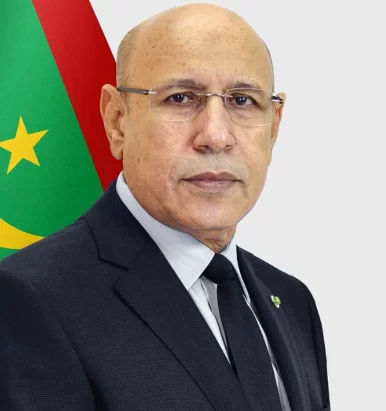
Mohamed Ould Cheikh Mohamed Ahmed Ould Ghazouani (arabisch محمد ولد الشيخ محمد أحمد ولد الغزواني, DMG Muḥammad walad aš-Šaiḫ Muḥammad Aḥmad walad al-Ġazwānī; * 31. Dezember 1956 in Boumdeid) ist ein mauretanischer General und Politiker, der seit seinem Amtsantritt am 1. August 2019 Präsident von Mauretanien ist. Er ist Mitglied der Partei Union pour la République und gilt als langjähriger Gefolgsmann von Mohamed Ould Abdel Aziz, der von 2009 bis 2019 Präsident war.
穆罕默德·乌尔德·谢赫·穆罕默德·艾哈迈德·乌尔德·加祖瓦尼(محمد ولد الشيخ محمد أحمد ولد الغزواني,1956年12月4日—),也被称为加祖瓦尼[2]和乌尔德·加祖瓦尼[3],是毛里塔尼亚政治家和前毛里塔尼亚武装部队上将,现任毛里塔尼亚总统[4],于2019年8月1日就职[5]。
加祖瓦尼是前国家安全局局长[1]和毛里塔尼亚武装部队前参谋长(2008-2018年)[6]。他在2018年10月至2019年3月期间担任毛里塔尼亚国防部长[7][8]。作为穆罕默德·乌尔德·阿卜杜勒-阿齐兹的亲密盟友,加祖瓦尼在2019年6月22日的总统选举中当选毛里塔尼亚总统[5]。
 Mohammad bin Salman bin Abdulaziz Al Saud
Mohammad bin Salman bin Abdulaziz Al Saud

 Party and government
Party and government
 Group of the twenty most important industrial and emerging countries
Group of the twenty most important industrial and emerging countries

 Party and government
Party and government
 *President or Chairman
*President or Chairman

Mohammed bin Salman bin Abdulaziz Al Saud (arabisch محمد بن سلمان بن عبد العزيز آل سعود, DMG Muḥammad b. Salmān b. ʿAbd al-ʿAzīz Āl Saʿūd; * 31. August 1985 in Dschidda) ist seit 2017 Kronprinz und seit 2022 Premierminister Saudi-Arabiens. Er ist außerdem Vorsitzender des Rats für Wirtschaft und Entwicklung und des Rates für politische und Sicherheitsangelegenheiten.[1][2][3] Bis zu seiner Berufung zum Premierminister im September 2022 bekleidete er seit Januar 2014 das Amt des Verteidigungsministers und seit Juni 2017 das des Ersten Stellvertretenden Premierministers, nachdem er von April 2015 bis Juni 2017 zunächst Stellvertretender Kronprinz und Zweiter Stellvertretender Premierminister war. Er gilt als De-facto-Herrscher des Landes.
 Narendra Modi
Narendra Modi

 Party and government
Party and government
 *President or Chairman
*President or Chairman

 Party and government
Party and government
 Group of the twenty most important industrial and emerging countries
Group of the twenty most important industrial and emerging countries

 Party and government
Party and government
 BRICS
BRICS
 Prime Minister of India
Prime Minister of India
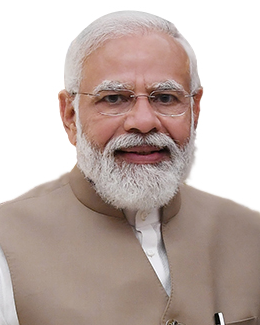
 *Track and field athletics
*Track and field athletics
 4x100 m Men
4x100 m Men
 BRICS summit
BRICS summit
 Commonwealth of Nations
Commonwealth of Nations
 Leichtathletik-Weltmeisterschaften
Leichtathletik-Weltmeisterschaften
 2001 Edmonton
2001 Edmonton

 Party and government
Party and government
 Group of the twenty most important industrial and emerging countries
Group of the twenty most important industrial and emerging countries

 Party and government
Party and government
 BRICS
BRICS
 South Africa
South Africa


 Belgium
Belgium
 Bulgaria
Bulgaria
 Denmark
Denmark
 Germany
Germany
 Estonia
Estonia

 European Union
European Union
 Member States of the European Union
Member States of the European Union
 Finland
Finland
 France
France

 History
History

 History
History

 History
History
 N 2000 - 2100 AD
N 2000 - 2100 AD
 Greece
Greece

 Hand in Hand
Hand in Hand
 Ireland
Ireland
 Italy
Italy
 Croatia
Croatia
 Latvia
Latvia
 Lithuania
Lithuania
 Luxembourg
Luxembourg
 Malta
Malta
 Netherlands
Netherlands
 Nobel prize
Nobel prize
 Nobel Peace Prize
Nobel Peace Prize
 Nobel prize
Nobel prize
 2012
2012
 Austria
Austria

 Party and government
Party and government
 Group of the twenty most important industrial and emerging countries
Group of the twenty most important industrial and emerging countries

 Party and government
Party and government
 Group of Seven,G7
Group of Seven,G7
 Poland
Poland
 Portugal
Portugal
 Romania
Romania
 Sweden
Sweden
 Slovakia
Slovakia
 Slovenia
Slovenia
 Spain
Spain
 Czech Republic
Czech Republic
 Hungary
Hungary

 Economy and trade
Economy and trade
 Free trade agreement
Free trade agreement
 Cyprus
Cyprus
Die Europäische Union (EU) ist ein Verbund von derzeit 28 Mitgliedstaaten. Außerhalb von Europa umfasst die EU auch einige Überseegebiete. Sie hat insgesamt mehr als eine halbe Milliarde Einwohner. Gemessen am Bruttoinlandsprodukt ist der EU-Binnenmarkt der größte gemeinsame Wirtschaftsraum[7] der Erde. Die EU stellt eine eigenständige Rechtspersönlichkeit dar und hat daher Einsichts- und Rederecht bei den Vereinten Nationen.[8] Die verbreitetsten Sprachen in der EU sind Englisch, Deutsch und Französisch. Im Jahre 2012 wurde die Europäische Union mit dem Friedensnobelpreis ausgezeichnet.[9]
Das politische System der EU, das sich im Zuge der europäischen Integration herausgebildet hat, basiert auf dem Vertrag über die Europäische Union und dem Vertrag über die Arbeitsweise der Europäischen Union. Es enthält sowohl überstaatliche als auch zwischenstaatliche Elemente. Während im Europäischen Rat und im Rat der Europäischen Union die einzelnen Staaten mit ihren Regierungen vertreten sind, repräsentiert das Europäische Parlament bei der Rechtsetzung der EU unmittelbar die Unionsbürger. Die Europäische Kommission als Exekutivorgan und der EU-Gerichtshof als Rechtsprechungsinstanz sind ebenfalls überstaatliche Einrichtungen.
Die Anfänge der EU gehen auf die 1950er-Jahre zurück, als zunächst sechs Staaten die Europäische Wirtschaftsgemeinschaft (EWG) gründeten. Eine gezielte wirtschaftliche Verflechtung sollte militärische Konflikte für die Zukunft verhindern und durch den größeren Markt das Wirtschaftswachstum beschleunigen und damit den Wohlstand der Bürger steigern. Im Lauf der folgenden Jahrzehnte traten in mehreren Erweiterungsrunden weitere Staaten den Gemeinschaften (EG) bei. Ab 1985 wurden mit dem Schengener Übereinkommen die Binnengrenzen zwischen den Mitgliedsländern geöffnet. Nach dem Fall des Eisernen Vorhangs beziehungsweise der Auflösung des Ostblockes im Jahr 1989 änderte sich die geopolitische Lage in Europa grundlegend, womit sich Möglichkeiten zur Vertiefung der Integration, aber auch zur Vorbereitung von Erweiterungen im Osten ergaben. Mit dem Vertrag von Maastricht wurde 1992 die Europäische Union gegründet, die damit Zuständigkeiten in nichtwirtschaftlichen Politikbereichen bekam. In mehreren Reformverträgen, zuletzt im Vertrag von Lissabon, wurden die überstaatlichen Zuständigkeiten der EU ausgebaut und die demokratische Verankerung der politischen Entscheidungsprozesse auf Unionsebene nachgebessert, vor allem durch nochmalige Stärkung der Stellung des Europäischen Parlaments. Eine europäische Öffentlichkeit und Identität als Voraussetzung einer supranationalen Volkssouveränität bildet sich indes erst allmählich und nicht ohne Gegenströmungen heraus. Seit den 1980er-Jahren nahm mit den Kompetenzerweiterungen und dem damit einhergehenden Bedeutungsgewinn der EU auch die öffentliche Debatte über die Verfasstheit der EU an Intensität zu; dabei wurden auch EU-skeptische Positionen vermehrt artikuliert. Im Vertrag von Lissabon wurden im Jahr 2007 auch Austrittsszenarien geregelt.
Von den 28 EU-Staaten bilden 19 Staaten eine Wirtschafts- und Währungsunion. Im Jahr 2002 wurde eine gemeinsame Währung für diese Länder, der Euro, eingeführt. Im Rahmen des Raums der Freiheit, der Sicherheit und des Rechts arbeiten die EU-Mitgliedstaaten in der Innen- und Justizpolitik zusammen. Durch die gemeinsame Außen- und Sicherheitspolitik bemühen sie sich um ein gemeinsames Auftreten gegenüber Drittstaaten. Zukunftsbezogenes gemeinsames Handeln ist Gegenstand der Initiative Europa 2020, zu der unter anderem die Digitalpolitik gehört. Die Europäische Union hat Beobachterstatus in der G7, ist Mitglied in der G20 und vertritt ihre Mitgliedstaaten in der Welthandelsorganisation.
Die EU war 2016 der weltweit zweitgrößte Wirtschaftsraum nach nominalem (hinter den USA) sowie kaufkraftbereinigten Bruttoinlandsprodukt (hinter der Volksrepublik China). Als Staatenverbund ist sie der größte Güterproduzent und die größte Handelsmacht der Welt. Die Mitgliedsstaaten haben einen der höchsten Lebensstandards weltweit, wobei es jedoch auch innerhalb der EU deutliche Unterschiede zwischen einzelnen Ländern gibt. Im Index der menschlichen Entwicklung galten 2015 26 der 28 Mitgliedstaaten als „sehr hoch“ entwickelt.
Nach der Osterweiterung in den Jahren 2004 und 2007 ist die Europäische Union infolge der Finanzkrise ab 2007 und durch die Flüchtlingskrise ab 2015 in verschiedenen Mitgliedsstaaten einer zunehmenden EU-Skepsis von Teilen der Bevölkerung ausgesetzt, die sich unter anderem in dem Brexit-Referendum von 2016 niedergeschlagen hat. Unter dem Eindruck der Krisenerscheinungen und der Zunahme von rechtspopulistischen Tendenzen in den Mitgliedstaaten der Union wird die EU-Finalitätsdebatte neuerlich intensiv geführt. Einen auf die nähere Zukunft gerichteten, stark beachteten Reformplan hat der französische Staatspräsident Emmanuel Macron mit seiner Initiative für Europa vorgelegt.
欧洲联盟(英语:European Union;法语:Union européenne;德语:Europäische Union),简称欧盟(英语:EU;法语:UE;德语:EU),是根据1993年生效的《马斯特里赫特条约》(也称《欧洲联盟条约》)所建立的政治经济联盟,现拥有28个成员国,正式官方语言有24种。规范欧盟的条约经过多次修订,目前欧盟的运作方式依照《里斯本条约》。政治上所有成员国均为议会民主国家(2008年《经济学人》民主状态调查);经济上为仅次于以美国为首的北美自由贸易区的世界上第二大经济实体,德国、法国及意大利为欧盟三大核心成员国;军事上绝大多数欧盟成员国均为北大西洋公约组织成员。
欧盟的历史可追溯至1952年建立的欧洲煤钢共同体,当时只有六个成员国。1958年又成立了欧洲经济共同体和欧洲原子能共同体,1967年统合在欧洲各共同体之下,1993年又统合在欧洲联盟之下,欧盟已经渐渐地从贸易实体转变成经济和政治联盟。同时,欧洲经济共同体和后来的欧盟在1973年至2013年期间进行了八次扩大,成员国从6个增至28个。起初推动欧盟建立的动机,是渴望重建二战后损失惨重的欧洲,以及担忧欧洲会再度陷入战争泥潭。
欧盟的主要机构有欧洲委员会(成员国家首脑组成)、欧盟理事会(成员国家部长组成的欧盟的上议院)、欧盟委员会(欧盟的行政机构)、欧洲议会(欧盟的众议院,唯一的直接民选机构)、欧洲法院、欧洲中央银行等。此外,欧洲原子能共同体也在欧洲共同体的管辖范围之内,但在法律上是独立于欧盟的国际组织。
欧元由28个成员国中的19个采纳为流通货币;《申根条约》取消了部分成员国之间的边境管制,目前已有22个欧盟成员国和4个非成员国实施。
目前欧盟的主要议题有英国脱欧、欧盟的扩大、落实《里斯本条约》、全球暖化问题、非欧元区成员国加入欧元区、主权债务危机、移民危机等。
欧州連合(おうしゅうれんごう、英: European Union、略称:EU)は、マーストリヒト条約により設立されたヨーロッパの地域統合体。
欧州連合では欧州連合条約の発効前に調印されていた単一欧州議定書によって市場統合が実現し、またシェンゲン協定により域内での国境通過にかかる手続きなどの負担を大幅に削減した。さらに欧州連合条約発効後によって外交・安全保障分野と司法・内務分野での枠組みが新たに設けられ、ユーロの導入による通貨統合が進められている。このほかにも欧州議会の直接選挙が実施されたり、欧州連合基本権憲章が採択されたりするなど、欧州連合の市民の概念が具現化されつつある。加盟国数も欧州経済共同体設立を定めたローマ条約発効時の6か国から、2013年7月のクロアチア加盟により28か国にまで増えている。
The European Union (EU) is a political and economic union of 28 member states that are located primarily in Europe.[13] It has an area of 4,475,757 km2 (1,728,099 sq mi) and an estimated population of over 510 million. The EU has developed an internal single market through a standardised system of laws that apply in all member states in those matters (only) where members have agreed to act as one. EU policies aim to ensure the free movement of people, goods, services and capital within the internal market,[14] enact legislation in justice and home affairs and maintain common policies on trade,[15] agriculture,[16] fisheries and regional development.[17] For travel within the Schengen Area, passport controls have been abolished.[18] A monetary union was established in 1999 and came into full force in 2002 and is composed of 19 EU member states which use the euro currency.
The EU and European citizenship were established when the Maastricht Treaty was enacted in 1993.[19] The EU traces its origins to the European Coal and Steel Community (ECSC) and the European Economic Community (EEC), established, respectively, by the 1951 Treaty of Paris and 1957 Treaty of Rome. The original members of what came to be known as the European Communities were the Inner Six: Belgium, France, Italy, Luxembourg, the Netherlands, and West Germany. The Communities and its successors have grown in size by the accession of new member states and in power by the addition of policy areas to its remit. The latest major amendment to the constitutional basis of the EU, the Treaty of Lisbon, came into force in 2009. While no member state has left the EU or its predecessors, the United Kingdom signified an intention to leave after a membership referendum in June 2016 and is negotiating its withdrawal.
The European Union provides more foreign aid than any other economic union.[20] Covering 7.3% of the world population,[21] the EU in 2017 generated a nominal gross domestic product (GDP) of 19.670 trillion US dollars, constituting approximately 24.6% of global nominal GDP[22] and 16.5% when measured in terms of purchasing power parity.[23] Additionally, 27 out of 28 EU countries have a very high Human Development Index, according to the United Nations Development Programme. In 2012, the EU was awarded the Nobel Peace Prize.[24] Through the Common Foreign and Security Policy, the EU has developed a role in external relations and defence. The union maintains permanent diplomatic missions throughout the world and represents itself at the United Nations, the World Trade Organization, the G7 and the G20. Because of its global influence, the European Union has been described as an emerging superpower.[25]
L'Union européenne (UE)Note 4 est une association politico-économique sui generis de vingt-huit États européens qui délèguent ou transmettent par traité l’exercice de certaines compétences à des organes communautaires5,6. Elle s'étend sur un territoire de 4,5 millions de kilomètres carrés7, est peuplée de plus de 512 millions d'habitants3 et est la deuxième puissance économique mondiale en termes de PIB nominal derrière les États-Unis8,9,10. L’Union européenne est régie par le traité de Maastricht (TUE) et le traité de Rome (TFUE), dans leur version actuelle, depuis le 1er décembre 2009 et l'entrée en vigueur du traité de Lisbonne. Sa structure institutionnelle est en partie supranationale et en partie intergouvernementale : le Parlement européen est élu au suffrage universel direct, tandis que le Conseil européen et le Conseil de l'Union européenne (informellement le « Conseil des ministres ») sont composés de représentants des États membres. Le président de la Commission européenne est pour sa part élu par le Parlement sur proposition du Conseil européen. La Cour de justice de l'Union européenne est chargée de veiller à l'application du droit de l'Union européenne.
La déclaration du 9 mai 1950 de Robert Schuman, alors ministre français des Affaires étrangères, est considérée comme le texte fondateur de la construction européenne. Sous l’impulsion de personnalités politiques surnommées les « pères de l'Europe »11, comme Konrad Adenauer, Jean Monnet et Alcide De Gasperi, six États créent en 1951 la Communauté européenne du charbon et de l'acier. Après l’échec d'une Communauté européenne de défense en 1954, une Communauté économique européenne est instaurée en 1957 par le traité de Rome. La coopération économique est approfondie par l’Acte unique européen en 1986. En 1992, le traité de Maastricht prend la suite de l’Acte unique et institue une union politique qui prend le nom d’Union européenne et qui prévoit la création d'une union économique et monétaire dotée d’une monnaie unique : l’euro. Instituée en 1999, la zone euro compte dix-neuf États en 2017. De nouvelles réformes institutionnelles sont introduites en 1997 et en 2001. À la suite de l’échec d’un projet de constitution européenne après le refus par référendum des peuples français et néerlandais, les institutions sont à nouveau réformées en 2009 par le traité de Lisbonne pour y intégrer les mesures prévues par ce projet de constitution.
Depuis la formation de la CEE, le nombre d'États membres est passé de 6 à 28. Les membres fondateurs de la Communauté économique européenne, en 1957, sont l'AllemagneNote 5, la Belgique, la France, l'Italie, le Luxembourg et les Pays-Bas. Ils sont rejoints en 1973 par trois membres de l'Association européenne de libre-échange : le Danemark, l'Irlande et le Royaume-Uni. L'Union s'élargit vers le sud avec d'abord l'adhésion de la Grèce en 1981, puis celle de l'Espagne et du Portugal en 1986. Entretemps, en 1985, le Groenland a décidé de se retirer en ratifiant le Traité sur le Groenland et a désormais le statut de pays et territoire d'outre-mer associé. Avec la fin de la Guerre froide, la partie orientale de l'Allemagne rejoint la Communauté économique européenne en 1990Note 6. L'Union européenne intègre en 1995 des États neutres : l'Autriche, la Finlande et la Suède. En 2004, dix nouveaux États, en majorité issus du bloc de l'Est, s'ajoutent aux quinze déjà membres : Chypre, l'Estonie, la Hongrie, la Lettonie, la Lituanie, Malte, la Pologne, la Slovaquie, la Slovénie et République tchèque. Deux États supplémentaires, la Bulgarie et la Roumanie, complètent en 2007 ce cinquième élargissement, Enfin, en 2013, la Croatie rejoint l'Union12. Le 23 juin 2016, les citoyens britanniques votent en majorité pour la sortie du Royaume-Uni de l'Union européenne dans le cadre d'un référendum. La procédure de retrait est enclenchée le 29 mars 2017 par l'activation de l'article 50 du traité sur l'Union européenne.
Le 12 octobre 2012, le prix Nobel de la paix est attribué à l'Union européenne pour « sa contribution à la promotion de la paix, la réconciliation, la démocratie et les droits de l'Homme en Europe »13.
L'Unione europea (abbreviata in UE o Ue, pron. /ˈue/[12]) è un'organizzazione internazionale politica ed economica a carattere sovranazionale, che comprende 28 paesi membri indipendenti e democratici. La sua formazione risale al trattato di Roma del 25 marzo 1957, la denominazione attuale al trattato di Maastricht del 7 febbraio 1992 (entrato in vigore il 1º novembre 1993), e l'istituzione ufficiale al 2002 con l'avvento della valuta unica ed il successivo trattato di Lisbona, dopo un lungo percorso intrapreso dalle Comunità europee precedentemente esistenti e attraverso la stipulazione di numerosi trattati, che hanno contribuito al processo di integrazione europea.
Questa garantisce la libera circolazione di persone, merci, servizi e capitali all'interno del suo territorio attraverso un mercato europeo comune e la cittadinanza dell'Unione europea, promuove la pace, i valori e il benessere dei suoi popoli, lotta contro l'esclusione sociale e la discriminazione, favorisce il progresso scientifico e tecnologico e mira alla stabilità politica, alla crescita economica e alla coesione sociale e territoriale tra gli stati membri[13], cercando di attenuare le differenze socio-economiche tra i vari stati membri e incrementarne il benessere socio-economico.
Le competenze dell'Unione europea spaziano dalle politiche economiche (agricoltura e commercio) agli affari esteri, alla difesa e alla protezione ambientale, con una politica agraria comune, una politica estera comune e la presenza di fondi strutturali per il raggiungimento degli obiettivi socio-economici preposti. In alcuni di questi campi tali funzioni la rendono dunque simile a una federazione di stati (per es. per quanto riguarda gli affari monetari o le politiche ambientali), mentre in altri settori l'Unione è più vicina a una confederazione (mancando di una Costituzione, ordinamento giuridico, politica interna e politica industriale comuni) o a un'organizzazione politica sovranazionale (come per la politica estera).
Le politiche di unione economica e monetaria dell'Unione europea hanno portato nel 2002 all'introduzione di una moneta unica, l'euro, attualmente adottato da 19 stati dell'Unione, che formano la cosiddetta eurozona, con una politica monetaria comune regolata dalla Banca centrale europea (BCE).
Il 12 ottobre 2012 è stata insignita del premio Nobel per la pace, con la seguente motivazione: «per oltre sei decenni ha contribuito all'avanzamento della pace e della riconciliazione, della democrazia e dei diritti umani in Europa».[14]
La Unión Europea (UE) es una comunidad política de derecho constituida en régimen sui géneris de organización internacional nacida para propiciar y acoger la integración y gobernanza en común de los Estados y los pueblos de Europa. Está compuesta por veintiocho Estados europeos y fue establecida con la entrada en vigor del Tratado de la Unión Europea (TUE) el 1 de noviembre de 1993.6
Con ese acto, la supraestructura «Unión Europea» aunaba y se fundaba sobre las tres Comunidades Europeas preexistentes —la Comunidad Europea del Carbón y del Acero (CECA), la Comunidad Europea de la Energía Atómica (Euratom) y la Comunidad Económica Europea (CEE/CE)— y les añadía la política exterior común y la cooperación judicial y policial, formando un sistema complejo conocido como «los tres pilares». Sin embargo, con la entrada en vigor el 1 de diciembre de 2009 del Tratado de Lisboa, la Unión Europea sucedió, por completo aunque con ciertas particularidades, a las Comunidades Europeas y asumió con ello su personalidad jurídica única como sujeto de derecho internacional.7
La Unión Europea ha desarrollado un sistema jurídico y político, el comunitario europeo, único en el mundo, que se rige por mecanismos y procedimientos de funcionamiento interno complejos, que se han extendido y evolucionado a lo largo de su historia hasta conformar, en la actualidad, un sistema híbrido de gobierno transnacional difícilmente homologable que combina elementos próximos a la cooperación multilateral, si bien fuertemente estructurada e institucionalizada, con otros de vocación netamente supranacional, regidos ambos por una dinámica de integración regional muy acentuada.
Todo esto desemboca en una peculiarísima comunidad de Derecho, cuya naturaleza jurídica y política es muy discutida, si bien sus elementos fundacionales y su evolución histórica, todavía abierta, apuntan, en el presente, a una especial forma de moderna confederación o gobernanza supranacional, acusadamente institucionalizada y con una inspiración histórico-política de vocación federal —en el sentido de un federalismo internacional n
 *Democratic Party
*Democratic Party
 Joe Biden
Joe Biden

 Party and government
Party and government
 Group of Seven,G7
Group of Seven,G7

 Party and government
Party and government
 *President or Chairman
*President or Chairman

 Party and government
Party and government
 Group of the twenty most important industrial and emerging countries
Group of the twenty most important industrial and emerging countries
